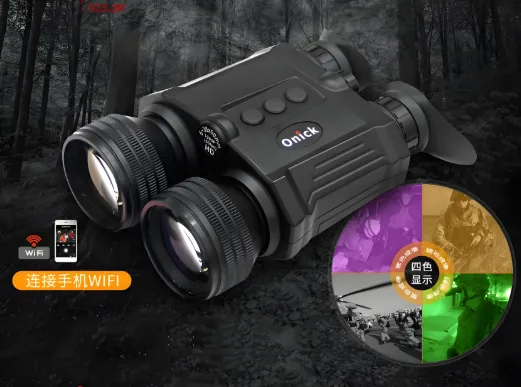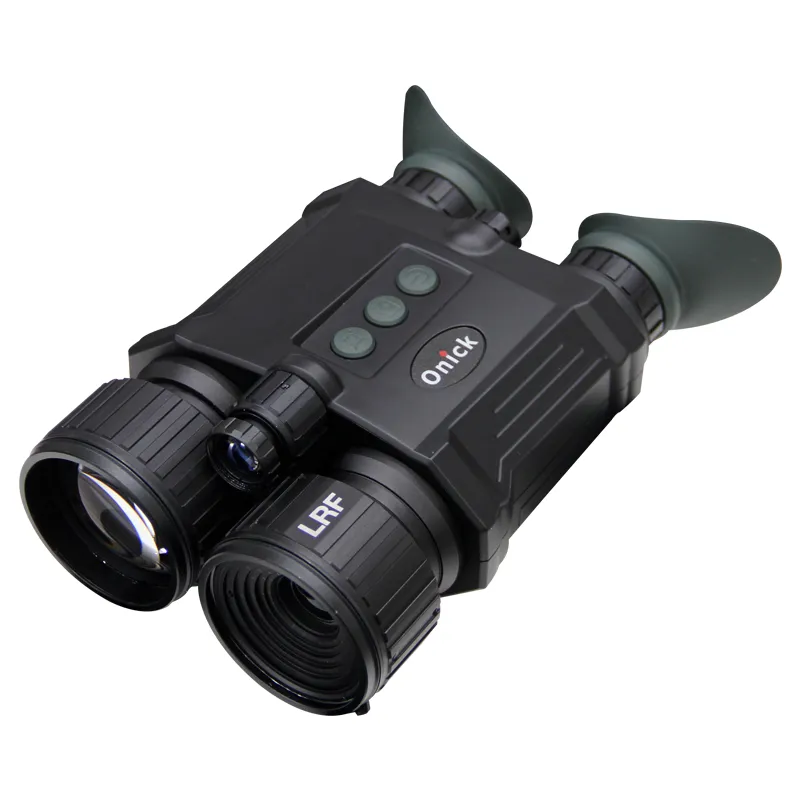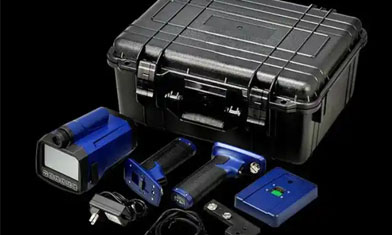All-day Binocular Night Vision Device: A Visual Weapon That Breaks The Boundary Between Day And Night
In complex and ever-changing environments, whether for military reconnaissance, law enforcement operations, or outdoor adventures, the demand for all-weather vision equipment is increasingly urgent. All-day binocular night vision devices, with their unique design and advanced technology, are a powerful tool for obtaining clear vision in diverse lighting conditions, playing a key role in multiple fields.
Core Technology Integration: The Foundation for All-Day Observation
1. Low-Light-Level Imaging Technology
Low-light-level imaging technology is a core capability of all-day binocular night vision devices at night or in low-light environments. This technology is based on image intensifier tube technology, which collects extremely weak natural light from the environment, such as starlight, moonlight, and a small amount of artificial light, and converts these faint photons into electrons. For example, in a common second- or third-generation image intensifier tube, photons strike the tube's photocathode, stimulating photoelectrons. These photoelectrons are accelerated and multiplied by a microchannel plate (MCP), amplifying their number by thousands or even tens of thousands of times. Finally, they strike a fluorescent screen, converting the electronic signals back into visible light, enabling the user to clearly see targets in low-light conditions. For example, the S60 binocular night vision device utilizes a high-performance second-generation/third-generation image intensifier, achieving a wide field of view and high-definition imaging, providing users with a clear view in low-light conditions.

Infrared Imaging Technology (Select Models)
To cope with total darkness, some all-day binocular night vision devices are equipped with infrared imaging. Active infrared imaging uses a built-in infrared transmitter to emit invisible infrared light, illuminating the target object. The reflected infrared light is then received by the objective lens and converted by a detector into an electrical signal, ultimately forming an image on the display. Passive infrared imaging, on the other hand, uses the infrared thermal radiation emitted by the object itself to create an image. Objects of different temperatures radiate infrared light of varying intensities, and the device captures these differences to form a thermal image. For example, some high-end night vision devices can use infrared imaging to penetrate obstacles and clearly visualize targets in inclement weather such as heavy smoke and fog. For example, when reconnaissance is performed around a fire scene, the device can detect the location of trapped people and the direction of fire spread through thick smoke.
3. Day/Night Optical System Design
This type of night vision device features a specialized optical system that maintains excellent performance under varying lighting conditions, both day and night. During the day, its optical system resembles that of a conventional telescope. Multi-layer, broadband-coated objective lenses and eyepieces effectively reduce light reflections, improve light transmittance, and produce clear, color-accurate images. At night, the optical system works in conjunction with low-light imaging or infrared imaging components to provide the user with usable visual information even in low-light or no-light conditions. For example, the Onick S60 electronically stabilized digital night vision binoculars feature a newly designed 50mm/F0.9 objective lens that captures ample light both day and night. Combined with its advanced imaging technology, this system enables stable observation in all weather conditions.

Features: Meeting Diverse Needs
1. High-Definition Recording and Image Display
Many all-day binocular night vision devices support high-definition photo and video recording, making it easy for users to record critical information. For example, the Onick NB550 supports 1920x1080 HD video recording with date and time recording, making it crucial for law enforcement evidence collection and military reconnaissance recording. Furthermore, the resolution of displays on these devices continues to increase. For example, the Orpha DB550+ night vision device boasts a 1280x720 resolution, clearly displaying images. Some models also support multiple color display modes, such as natural, black and white, green, pine, and amber, allowing users to choose from a variety of color options to suit different environments and observation needs, enhancing visual quality and improving target identification.
2. Electronic Image Stabilization and Precision Focus
To ensure stable and clear images during handheld observation, some night vision devices incorporate electronic image stabilization (EIS). For example, the Onick S60 features EIS. This feature uses sensors to detect device vibration and employs algorithms to compensate and correct the image in real time, reducing shake and blur, ensuring clear observation even while moving. In addition, some products feature convenient focusing features, such as one-handed adjustment of the right lens for quick focus. This is particularly useful for observing moving targets outdoors or searching for targets while moving. For example, the Orphan DB550+ features one-handed adjustment of the right objective lens for quick focus, and one-handed adjustment of the left objective lens for zooming in or out of the infrared illumination range, meeting diverse observation needs.
3. Multifunctional Data Assistance
Modern all-day binocular night vision devices often integrate a variety of practical functions. An electronic compass measures cardinal directions, providing users with orientation information and helping them determine direction during field expeditions and military operations. GPS positioning can accurately locate the user's geographic location, facilitating the recording and sharing of route coordinates. For example, the Orphan DB550+'s outdoor GPS positioning function makes it easy to pinpoint your location in outdoor environments. Some models also feature a pitch/barometer display, providing additional environmental data to aid decision-making. Some devices also support Wi-Fi connectivity with mobile apps, enabling image transmission and remote operation. On mobile devices supported by the app, users can record and take photos directly by tapping the corresponding buttons on the screen, eliminating the need to enter the instrument's menus, greatly enhancing ease of use.
Structural Design: Balancing Durability and Comfort
1. Durable Material Selection
Given the complexities of their operating environments, all-day binocular night vision devices are typically constructed from durable materials. High-strength metals such as aluminum alloy and magnesium alloy are often used for their bodies. These materials are not only strong enough to withstand certain levels of impact and vibration, preventing damage in harsh environments that could affect normal use, but also have a low density, reducing the overall weight of the device and making it easier for users to carry for extended periods. For example, some night vision devices used in military and law enforcement applications have specially treated metal bodies that offer excellent wear and corrosion resistance, making them suitable for a variety of complex environments.
2. Ergonomic Design
To enhance user comfort and ease of operation, these night vision devices are designed with ergonomic considerations in mind. The binocular design aligns with human binocular observation habits, effectively reducing eye fatigue caused by prolonged viewing and maximizing observation quality. Furthermore, the interpupillary distance (IPD) is adjustable to accommodate physiological differences among users, ensuring comfortable use for everyone. For example, the adjustment range for most products is between 60 and 71mm, meeting the needs of most people. Furthermore, some night vision devices feature a special tactile paint finish and a flexible PVC grip on the grip, ensuring a comfortable grip and preventing slippage during operation, enhancing the user experience.





















